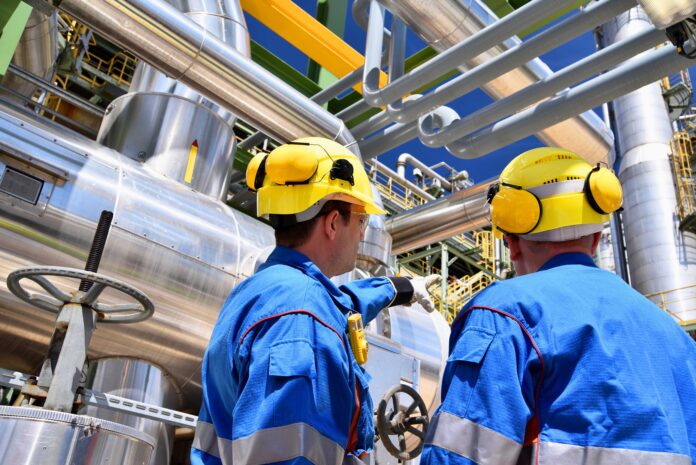The oil and gas industry is at a pivotal crossroads, where maintaining operational efficiency while curtailing costs has never been more crucial. Global demand for energy is rising, and aging infrastructure paired with unpredictable market dynamics has further exacerbated the challenges faced by industry stakeholders. Predictive maintenance, bolstered by big data analytics and cloud computing technologies, has emerged as a transformative approach to maximize asset utilization, enhance safety, and minimize downtime in this sector.
What does predictive maintenance mean?
Predictive maintenance refers to a proactive approach to maintenance that anticipates equipment failures before they occur. Instead of adhering to a rigid maintenance schedule or merely relying on reactive strategies, organizations analyze continuous streams of data from various sources to predict when machinery will fail or require servicing. This approach leads to reduced maintenance costs, increased equipment lifespan, and minimized unplanned downtime, which all play a crucial role in the oil and gas operations where delays can lead to significant financial losses.
The Role of Big Data in Predictive Maintenance
Data Collection
The foundation of predictive maintenance lies in the effective collection and analysis of big data. Oil and gas companies generate vast amounts of data through sensors, IoT devices, and equipment monitoring systems. This data encompasses a wide range of information, including:
- Operational Data: Temperature, pressure, and flow rates from drilling rigs and refineries.
- Historical Maintenance Data: Records of past maintenance activities, repairs, and failures.
- Environmental Data: Weather conditions, seismic activity, and other external factors affecting operations.
- Performance Metrics: Data relating to the performance efficiency of equipment and machinery.

Data Analysis
Once collected, this data needs to be processed and analyzed to extract meaningful insights. Employing advanced analytics methods, such as machine learning algorithms, organizations can identify patterns, correlations, and anomalies in the data. For instance, algorithms can pinpoint conditions that typically precede equipment failures, enabling teams to take preventative action based on real-time insights.
Predictive Models
Using historical data to create predictive models is a cornerstone of successful predictive maintenance. By training these models on extensive datasets, companies can develop algorithms to forecast future equipment health and performance. These models can factor in various elements, such as operational conditions, maintenance history, and manufacturer specifications, allowing for tailored predictions suited to specific assets.
The Impact of Cloud Computing
Scalability
One of the challenges of managing extensive datasets is the scalability of computing resources. Traditional on-premises systems often struggle to keep pace with rapidly growing data quantities and analysis demands. Cloud computing alleviates this challenge by offering virtually limitless storage and computing power. Organizations can seamlessly scale their infrastructure as data volumes grow, accommodating the dynamic needs of predictive maintenance initiatives.
Accessibility and Collaboration
Cloud computing enhances access to data and analytics tools across the organization. Stakeholders from different functions—such as operations, maintenance, and management—can collaborate and access real-time insights from anywhere in the world. This collaborative environment ensures that relevant information is available for decision-making, leading to a more cohesive approach to maintenance management.
Advanced Analytics Capabilities
Cloud platforms often come equipped with advanced analytics tools and resources, such as artificial intelligence (AI) and machine learning frameworks. By leveraging these tools, oil and gas companies can develop sophisticated predictive models that provide deeper insights into equipment performance and maintenance needs. Cloud-based analytics also cater to real-time data processing, allowing for timely interventions and more informed decision-making.

Implementation Strategies for Predictive Maintenance
Establishing a Robust Data Infrastructure
To effectively leverage big data and cloud computing, it’s essential to build a strong data infrastructure. This includes selecting appropriate sensors and IoT devices to collect relevant data, investing in secure cloud storage solutions, and implementing data governance frameworks to ensure data accuracy, consistency, and reliability.
Integration of Systems
Seamless integration of various systems within the organization is crucial for successful predictive maintenance. This involves connecting data sources, software applications, and analytical tools to allow for comprehensive data analysis. Integrated systems can provide a unified view of operations and maintenance activities, enhancing decision-making and facilitating a more agile response to equipment conditions.
Cross-Functional Collaboration
Creating a culture of cross-functional collaboration is vital for predictive maintenance success. Maintenance personnel, engineers, data scientists, and management should work together to develop predictive models that incorporate insights from various perspectives. This collaboration ensures that the solutions generated align with operational realities while addressing potential challenges effectively.
Continuous Monitoring and Improvement
Predictive maintenance is not a one-time effort. Organizations should implement continuous monitoring and improvement strategies to refine their predictive models. This includes regularly reviewing the accuracy of predictions, adjusting models based on new data, and aligning maintenance strategies with changing operational conditions.
Benefits of Predictive Maintenance in Oil & Gas
Improved Equipment Reliability
By utilizing predictive maintenance, oil and gas companies can significantly improve the reliability of their assets. Predictive models help identify potential issues before they escalate, leading to timely interventions and reducing the likelihood of equipment failures. This reliability translates to enhanced production efficiency and reduced downtime.
Significant Cost Savings
Reducing unplanned downtime minimizes the costly disruptions that can occur in oil and gas operations. Predictive maintenance can lead to substantial savings by decreasing maintenance costs, optimizing spare parts inventory, and improving labor efficiency. Studies have shown that companies can save between 8-12% on maintenance costs when implementing predictive maintenance strategies.
Enhanced Safety
Safety is paramount in the oil and gas industry, where equipment failures can result in hazardous situations. By predicting and addressing potential failures proactively, companies can enhance employee safety and environmental protection. Reducing equipment failure risks not only safeguards personnel but also helps prevent costly spills and accidents.
Extended Asset Lifespan
Regularly monitoring equipment conditions and addressing concerns before they lead to failure extends the lifespan of machinery. By investing in preventive measures and maintaining assets based on data-driven insights, oil and gas operators can realize higher returns on their capital investments.
Challenges and Considerations
While the benefits of predictive maintenance are substantial, it is essential to recognize the challenges associated with its adoption.
Data Security and Privacy
As with any technology-driven initiative, data security is a critical concern. Organizations must ensure that sensitive data collected from equipment and operations is safeguarded against cyber threats. Implementing robust cybersecurity measures is essential for protecting data integrity and maintaining confidentiality.
Skill Gaps
The successful implementation of predictive maintenance requires a workforce equipped with relevant skills in data analytics, machine learning, and cloud computing. Additionally, employees need training to interpret predictions and insights effectively. Bridging the skills gap through training and recruitment is vital for maximizing the potential of predictive maintenance initiatives.
Change Management
Transitioning to a predictive maintenance culture may face resistance within organizations accustomed to traditional maintenance strategies. Effective change management strategies are necessary to facilitate this transition, ensuring stakeholders understand the value of predictive approaches and embrace the new methodologies.
Arshon Technology’s Innovations in Predictive Maintenance
Arshon Technology is a prominent leader in predictive maintenance across various industries, utilizing its expertise in big data analytics and cloud computing to enhance operational efficiency and reduce costs. The company offers a comprehensive suite of tools that collect, analyze, and interpret extensive datasets generated from IoT devices and equipment monitoring systems. This empowers organizations to foresee equipment failures and optimize their maintenance schedules effectively.
This proactive strategy not only boosts the safety and reliability of assets but also leads to substantial cost savings and extends equipment lifespans. Oil and gas companies aiming to innovate their maintenance approaches will find Arshon Technology’s solutions particularly well-suited to address the complexities of today’s operational challenges.
Conclusion
As the oil and gas industry continues to face escalating challenges associated with operational efficiency, cost management, and safety, predictive maintenance powered by big data and cloud computing has emerged as a beacon of innovation. By harnessing the capabilities of these advanced technologies, companies can enhance asset reliability, reduce costs, and foster a safer work environment. Embracing this proactive approach not only positions organizations favorably in a competitive market but also enables them to meet the energy demands of the future sustainably. Adapting to these changes will require commitment, investment, and a willingness to innovate, but the potential return on investment is well worth the effort.
